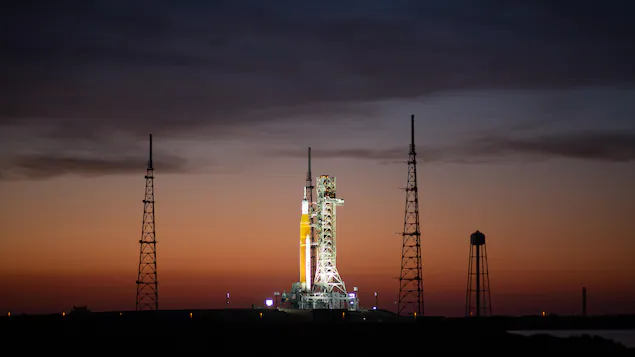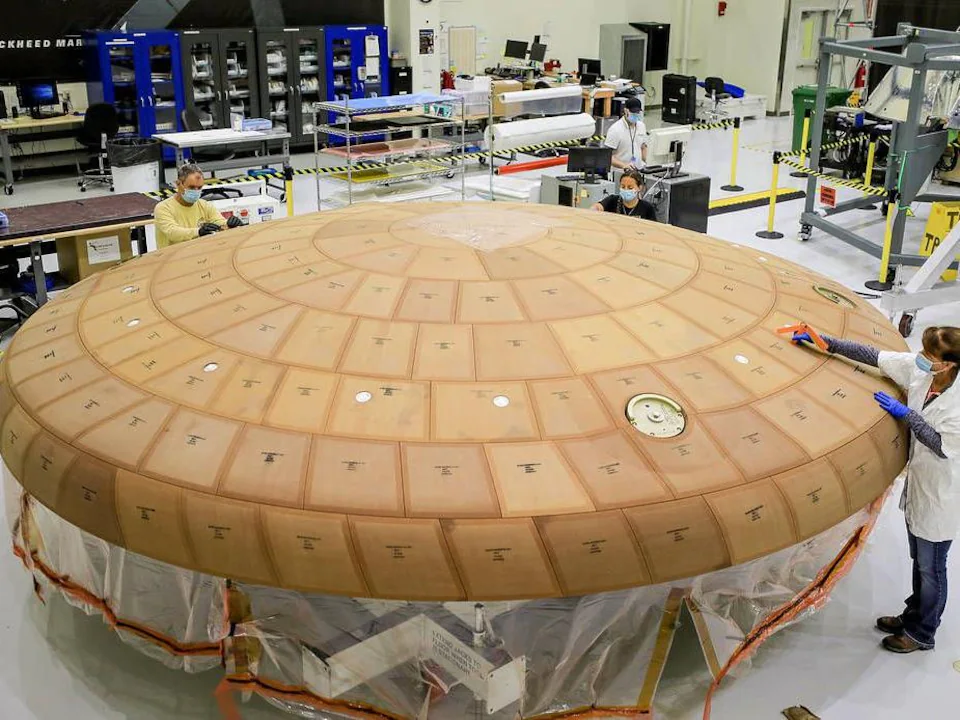The orange and white rocket, which was to be the first flight from Launch Pad 39B at the Kennedy Space Center in Florida, is the most powerful in the world.
Takeoff is scheduled for 2:17 p.m. local time, with a possible delay of up to two hours. Weather conditions were favorable 60% at the start of this shooting window, and gradually improved to 80%.
Shortly before 6 a.m., launch manager Charlie Blackwell-Thompson gave the go-ahead to begin filling the rocket’s tanks with its coolant fuel, a total of about three million liters of liquid hydrogen and oxygen.
But a little more than an hour later, a leak was detected at the foot of the rocket, at the level of the tube through which hydrogen passes into the tank. The flow stopped while the teams searched for a solution.
technical problems
Monday, during the first attempt, the launch was called off at the last minute due to technical problems, particularly with the cooling of the engines.
Departures can be rescheduled to Monday or Tuesday. It will then be necessary to wait until September 19 at the earliest, due to the positions of the Earth and Moon.
The purpose of this unmanned mission, called Artemis I, is to verify that the Orion capsule, located on top of the rocket, is safe for transporting future astronauts.
Thanks to this new ship, the US space agency intends to reconnect with distant human exploration, as the moon is 1,000 times farther from the International Space Station.
Above all, 50 years after the last Apollo mission, this time NASA intends to establish a permanent human presence there in order to make it a springboard for a trip to Mars.
In the middle of a long weekend in the US, as many as 400,000 people were expected to like take off, especially from the surrounding beaches.
Several astronauts have also made the flight, including Frenchman Thomas Pesquet.
On the way to the moon
When the rocket finally takes off, two minutes after takeoff, the boosters will fall back into the Atlantic Ocean. After eight minutes, the main stage breaks in turn. Then, about an hour and a half later, a final upper-stage thrust will set the capsule on its way to the moon, which will take several days to arrive.
The trip is expected to take a total of six weeks. Orion will venture up to 64,000 kilometers behind the moon, farther than any other habitable spacecraft to date.
The main purpose of the Artemis I is to test the capsule’s heat shield, which is the largest of all. Returning to the Earth’s atmosphere, it will have to withstand a speed of 40,000 km / h and a temperature half the temperature of the surface of the Sun.
In total, the ship would have to travel about 2.1 million kilometers to land in the Pacific Ocean.
The success of the full mission would be a relief to NASA, which was originally intended for the 2017 debut of the SLS. NASA will spend more than $90 billion on its new lunar program by the end of 2025, according to a public audit.
A varied and comprehensive journey
The name Artemis was chosen after a female character, the twin sister of the Greek god Apollo, echoing the Apollo program that sent only white men to the lunar surface between 1969 and 1972.
This time, NASA wants to allow the first person of color and the first woman to walk on the moon.
The next mission, Artemis II, will take astronauts to the Moon in 2024, without landing there. This honor will be reserved for the crew of Artemis III, in 2025 at the earliest. Then NASA wants to launch about one mission each year.
It would then be a matter of building a space station in the lunar orbit GateA base on the moon.
Here, NASA wants to test the technologies needed to send the first humans to Mars: new suits, a navigation vehicle, a potential use of lunar water…
According to NASA Administrator Bill Nelson, a round trip to the Red Planet aboard Orion, which will last several years, could be attempted at the end of the 2000s.

“Hardcore beer fanatic. Falls down a lot. Professional coffee fan. Music ninja.”








More Stories
SALES / PHOTO SALES – Nikon D850 “5 Star” Bare Body Photo Body at €2,539.00
Discovering a new turning point under the Antarctic ice sheet! What are the consequences?
Record number for an insect!